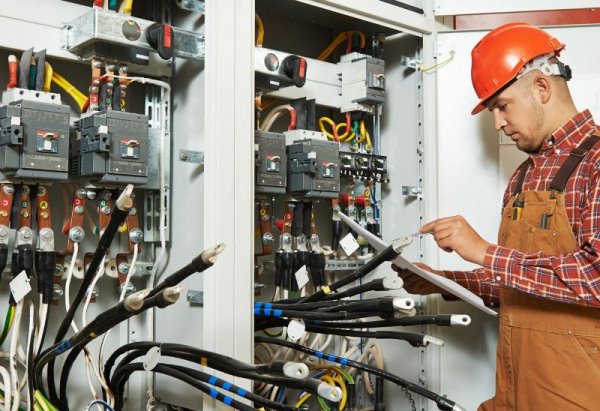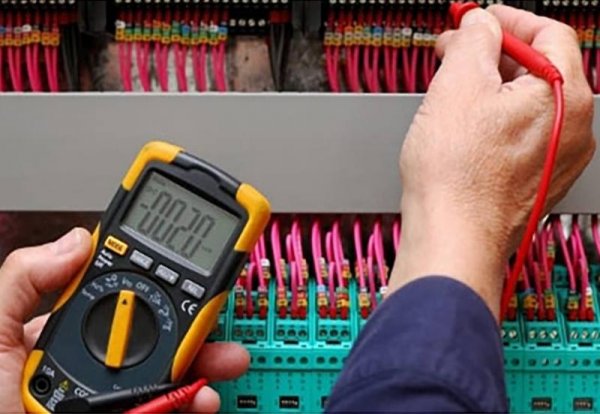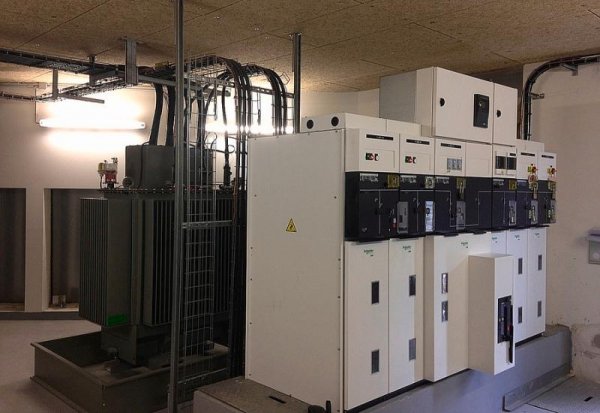Work in electrical installations according to the permit, the order and according to the order of current operation
The main task in electricity is the correct organization of the maintenance of electrical installations and electrical networks. When servicing electrical objects, it is important above all to ensure the safety of personnel during work.
Depending on the volume and nature of the work performed, the necessary safety measures and the number of personnel, work in electrical installations can be formalized in one of the following ways: by permit, order and in the order of current operation. In this article, we briefly describe and give the differences between each of the options.
Running a job in the order of the current operation
In this case, we are talking about works that are carried out without issuing a warrant or an order. Each energy facility or the enterprise as a whole has a corresponding list of works that can be carried out in the order of current operation.These works are carried out by employees who have the right to maintain a particular installation.
Approximate list of completed works in the order of the current operation:
-
cleaning in buildings and facilities, landscaping of open switchgear, mowing overgrowth, mowing grass, clearing passages to equipment from snow;
-
reading of measuring devices as well as measuring instruments;
-
restoration of inscriptions, sending names of various items of equipment, provided that employees comply with safety requirements;
-
maintenance and repair of lighting devices, replacement of lamps that are not higher than 2.5 m from the floor;
-
supervision of power transformer drying equipment;
-
cleaning the surface of measuring devices and various elements of relay protection, control and automation panels;
-
restoration of inscriptions on labels and on various elements of devices for relay protection and automation, on protective panels; — checking the positions of the switching devices;
-
reporting of emergency recorders, microprocessor protection devices and other miscellaneous devices;
-
voltage measurements, electrolyte density, adding electrolyte, as well as wiping insulation elements and boxes in the battery compartment;
-
surface cleaning and painting of equipment located in warehouses and at sites away from existing electrical installations.
Thus, in the order of current operation, as a rule, minor works are carried out in facilities that are not related to equipment repair, without the need for operational switching and implementation of measures to organize workplaces.
These works, as a rule, are carried out during a work shift without the need for registration in operational documentation and without prior approval from senior personnel, such as the current duties of workers serving a certain electrical installation.
Execution of work to order
The order may be issued in writing or orally. The decree provides safe work, for which the officer giving the order specifies what work must be done and what safety precautions must be taken.
The order also specifies the persons entrusted with the work, as well as the time of work (within one day or shift). If it is necessary to attract or remove employees from work, or to extend the time of work, repeated issuance of an order is necessary.
The following works can be performed to order:
-
in electrical installations up to 1 kV, disconnection or connection of cables, buses, wires, replacement of low-voltage protective devices, contactors, disconnectors and other switching devices, connection of electric motors;
-
measurements with insulating measuring clamps;
-
voltage regulation of power transformers equipped with load switches;
-
work on withdrawable elements of switchboards, while the curtains of the compartments of cells with live parts must be locked;
-
operation of motors from which the power cable is disconnected, short-circuited and grounded;
-
taking samples, as well as adding transformer oil in compliance with the necessary safety measures;
-
connection of oil drying and cleaning devices;
-
repair, testing and measurements in secondary switching circuits of equipment drives, relay compartments, cabinets, changing protection settings and checking them;
-
felling of trees in the protective zone of power lines, provided that these works are carried out at an acceptable distance from live elements, and also if, when the trees fall, their branches will not touch the wires of the line;
-
work on the line that does not require the exit of the overhead line for repair, provided that the personnel is raised no higher than three meters from the ground, the support is dug to a depth of no more than half a meter, and also without dismantling the structural elements of overhead line supports; -checking power lines, provided there are no hard-to-reach areas;
-
restoration of inscriptions on supports, carrying out measurements with specialized goniometric devices, thermovision diagnostics of overhead lines;
-
any urgent work in electrical installations to eliminate emergency situations, troubleshooting when there is no time to lose for issuing and issuing a work permit.
The number of employees who can work on one order is usually no more than three people. Therefore, if it is necessary to include a larger number of personnel in the brigade, it is necessary to issue a work permit.
Repair and maintenance of electrical equipment requiring on-the-job training is carried out to order.These are simple and harmless works that do not require complex operational switching, without the use of special equipment, special equipment, without the need for a sling, welding, working at height and climbing, as well as outside the area of intensive traffic, the location of various communications.
Lists of works that are recommended to be carried out to order and in the order of current operation are based on local conditions, guided primarily by the requirements of safety regulations. Therefore, these lists may differ from one utility to another.
Execution of works on parallel reception
All works that are not included in the existing list of construction works at the enterprise, carried out to order and according to the order of current operation, are carried out according to work permits.
The work permit is a form of a certain sample, which indicates the name of the work performed, the team members and their electrical safety groups, the time of work, the necessary safety measures.
This form specifies in detail the name of objects and equipment that must be disconnected and grounded, as well as sections of the electrical installation and live elements that cannot be approached. If necessary, indicate the position and name of the technique or equipment on which the work will be performed.
Also, in the work permit, in the relevant section, additional instructions can be provided to ensure safety during the production of work, as well as actions with equipment that must be carried out during the repair process.
In addition, responsible persons take measures to prepare the workplace and allow service personnel to perform work. Further control over compliance with safety measures by employees, as well as the organization of the work process, is carried out by the work manager in parallel.
The permit is issued when it is necessary to perform more complex and dangerous work, as well as work requiring the use of different equipment and special equipment; for the production of tasks of the same type on different objects or sections of the same electrical installation for alternative reception.
The work permit can be issued for several work shifts, therefore it is advisable to issue it when performing long-term work of the same type in electric power facilities.
Also, the outfit, if necessary, can be extended once up to 15 days. Unlike the order, a larger number of workers (required by the working conditions) can work under the permit and, if necessary, the composition of the brigade can be changed without the need to issue a new permit and admit the entire brigade.
It should be noted that during the period of introduction of special conditions for the safe conduct of work, in order to increase the level of safety, all work is carried out according to a permit, including those that are usually carried out to order.
In contrast to the work carried out in the order of current operation, if it is necessary to form the repair works by order or in parallel, the permission of the dispatcher on duty (senior operational person) is required for the preparation of workplaces and further acceptance of the brigade . At the same time, all actions on the preparation of workplaces, the reception of the brigade, as well as the registration of interruptions in work and the completion of work, are recorded in the operational documentation (operational log, log of work performed).
See also:Electrical Safety Adoption Groups: What's Out There and How to Get One



